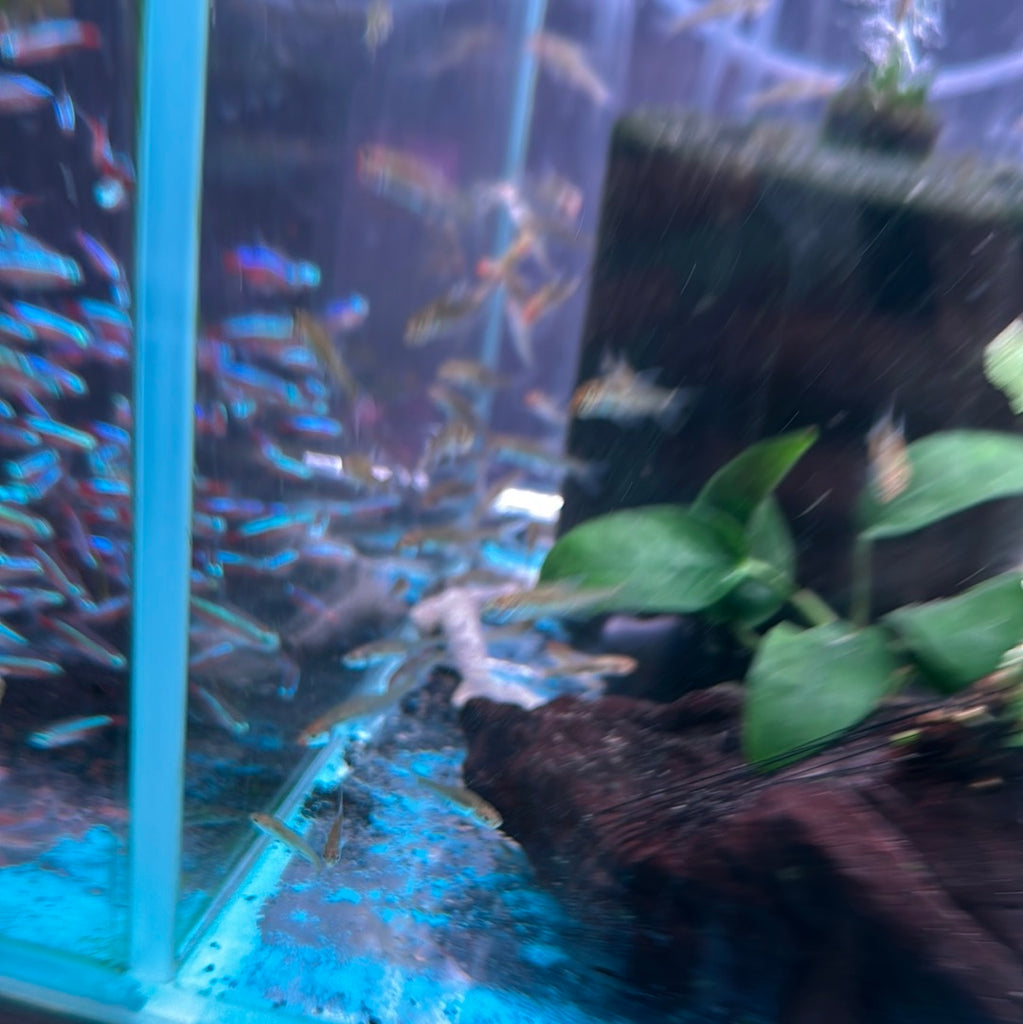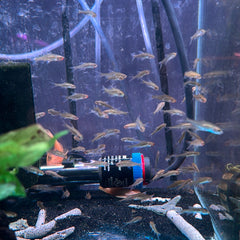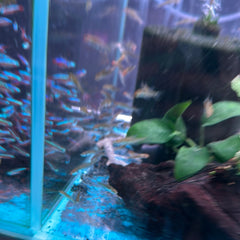The Rummy Nose Rasbora (Sawbwa resplendens), also known as the Asian Rummy Nose Tetra, is a popular cooler-water nano fish that is highly sought after by aquarists. Despite its name, it is not a true tetra but belongs to the rasbora family. This species is admired for its shoaling behavior, peaceful nature, and small size, making it an excellent addition to peaceful community aquariums. It particularly stands out in planted tanks with dark substrate, creating a visually striking display. Sadly, wild populations of this fish are facing challenges, but there are efforts to cultivate and preserve them through dedicated farms.
The Rummy Nose Rasbora primarily occupies the top and middle levels of the water column, although it can also be seen swimming and feeding in the middle and bottom areas. It peacefully coexists with other small, peaceful fish that do not compete with it for food. While it can be housed with adult dwarf shrimp, it may prey on shrimp fry. Larger, peaceful invertebrates can also make suitable tankmates. To exhibit their natural behavior and well-being, Rummy Nose Rasboras must be kept in schools of six or more, with larger schools being more ideal as males continuously engage in posturing and competition for dominance. The shoaling behavior of a larger group of these fish is captivating. Their natural habitat typically has slow water flow and varying pH levels. It is crucial to maintain very clean water conditions for them to thrive. They display their optimal coloration and overall health in planted aquariums with dark substrate, especially when floating plants are present. The Rummy Nose Rasbora demonstrates exceptional adaptability for a rasbora species.
In terms of diet, the Rummy Nose Rasbora is not overly picky and will flourish and exhibit vibrant colors with a varied diet, mainly consisting of carnivorous foods. It readily accepts high-quality flake food and pellets. Additionally, live, frozen, or freeze-dried options such as Artemia (brine shrimp), microworms, Tubifex worms, and finely chopped bloodworms are all eagerly consumed by this species. Providing a diverse diet ensures their nutritional needs are met and supports their overall health and coloration.




